###Introduction
HRM staff can view an take action on documents via the DMS manager app.
Note that this is the same part of the app that is used by line managers. Care has to be taken when setting up roles and dashboard templates, to make sure that the right dashboard tiles, menu items and document categories are assigned to the correct role.
The general process and options for HRM staff is the same as for Line manager, differences are mainly some additional or different dashboard tiles and menu items.
If HRM staff has access to a document category and a certain access level, then they have that for ALL workers in the organization.
###HRM staff dashboard
Via the dashboard, HRM staff can navigate to the All workers screen, and have insight the total number of expiring documents and number of documents per status :

###HRM staff All expiring content
This screen shows all expired or soon expiring documents of the whole organisation:

###HRM staff Organisational data
HRM staff can view organisational data. In this example we granted all sub menu items to HRM staff:
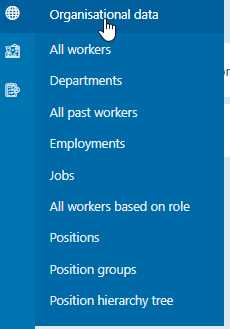
Organisational data was already described in Organisational Data, but 2 items we want to highlight.
All workers based on role: this is typically used when a certain HRM role has access to all worker documents for a specific legal entity. Prerequisite is that in the source system D365 Finance and Operations, in system administration > users > roles, the role is granted access to a specific legal entity.
Position hierarchy tree: via this option you can see who reports to whom or who has which direct reports in the LINE hierarchy:
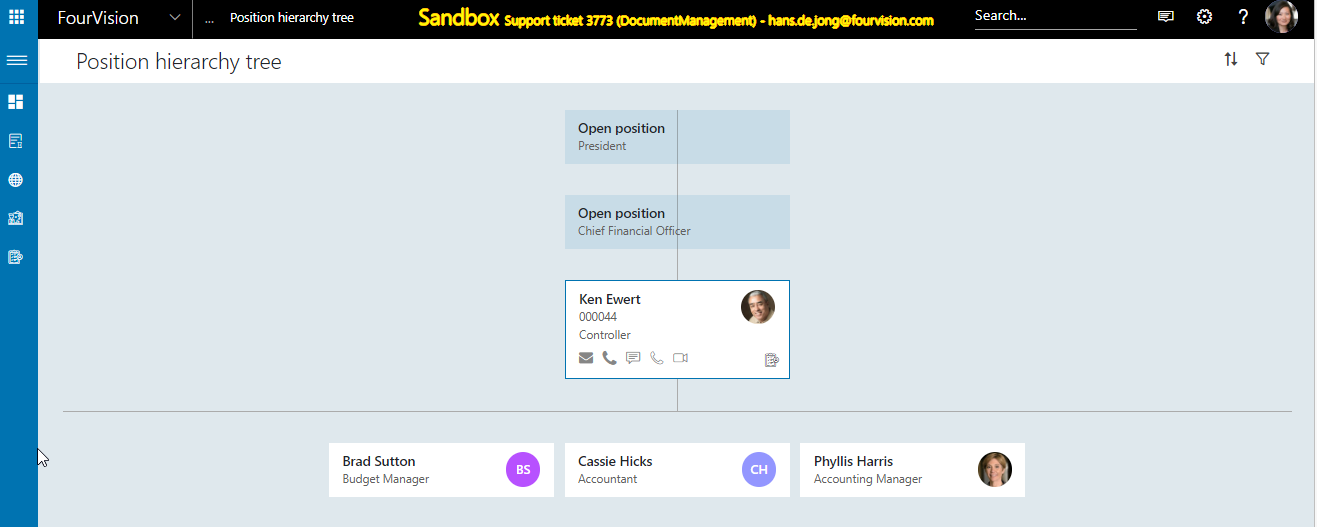
By clicking on a card, e.g. Phyllis, we can drill down:
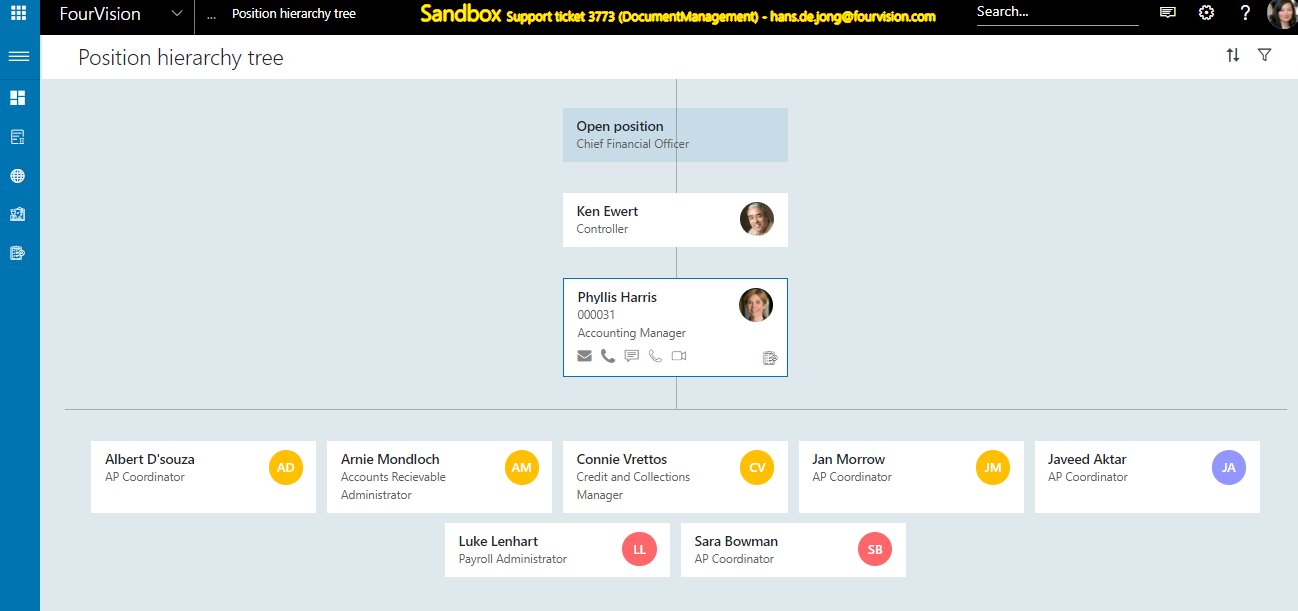
###HRM staff All documents for approval
This screen shows all documents in the organisation that need to be approved:

###HRM staff Applicants
HRM staff can see a list of applicants. They either come from the web app HR request or are created in Document management. Via the 3 dots you can edit and delete the applicant and view documents:

Via 3 dots > EDIT you can edit the applicant:
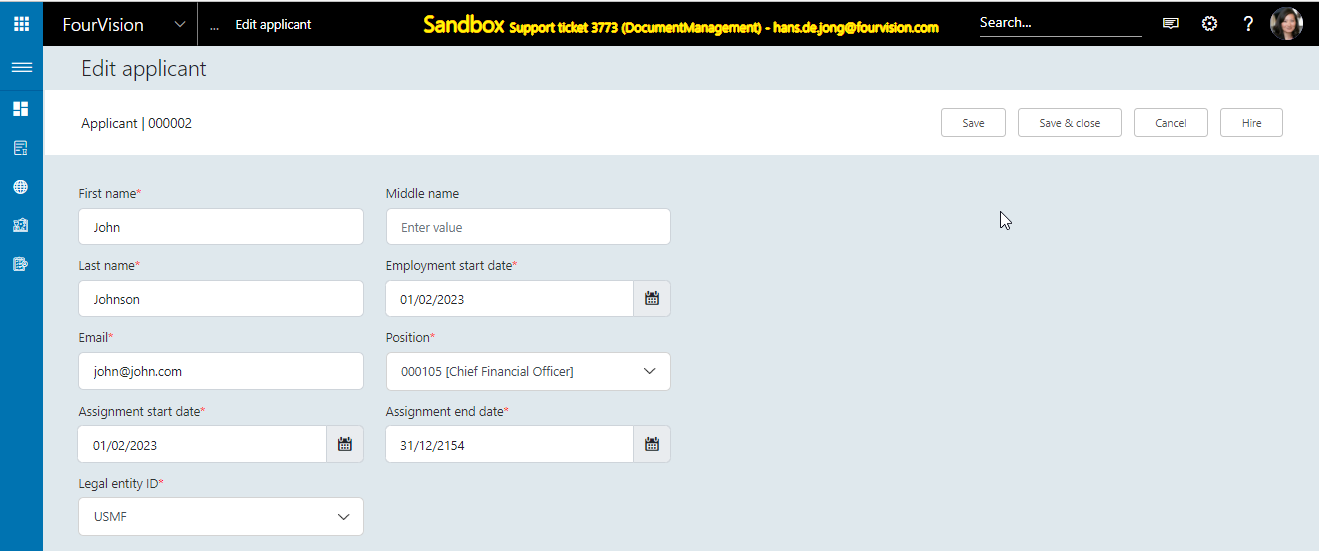
In the Edit screen you can promote the applicant to a Hired worker, via the HIRE button: when clicking the button, based on employment start date and position, a worker and employment and position assignment will be created in the source system D365 Finance and Operations:
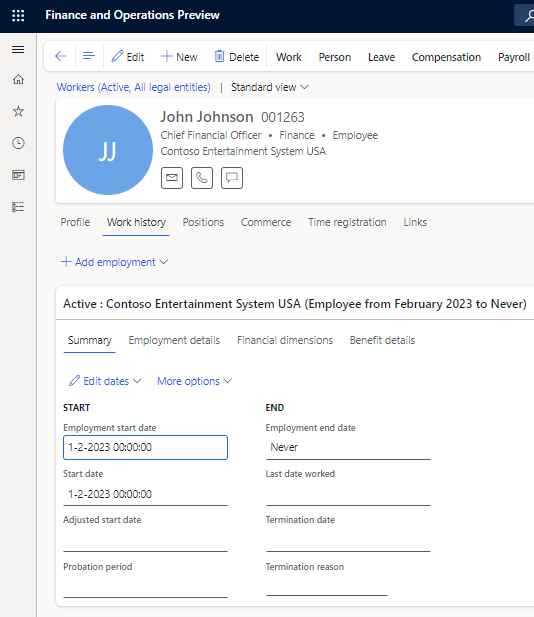
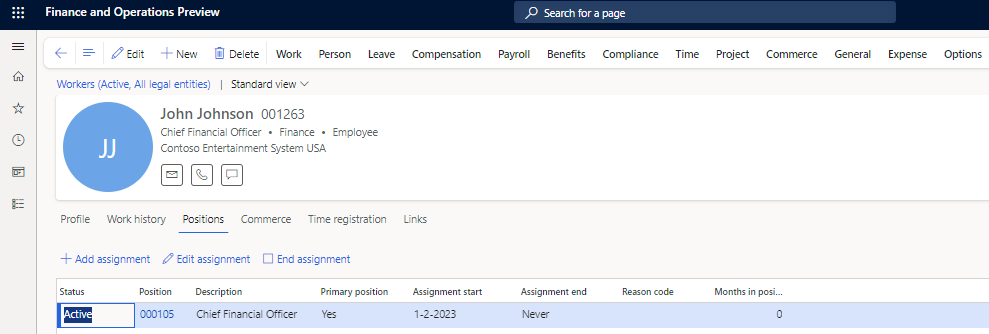
And the Applicant list page now indicates the applicant as hired:

Note: if in parameters the toggle for showing the HIRE button is disabled:

then you will not have the HIRE button in the applicant screen:
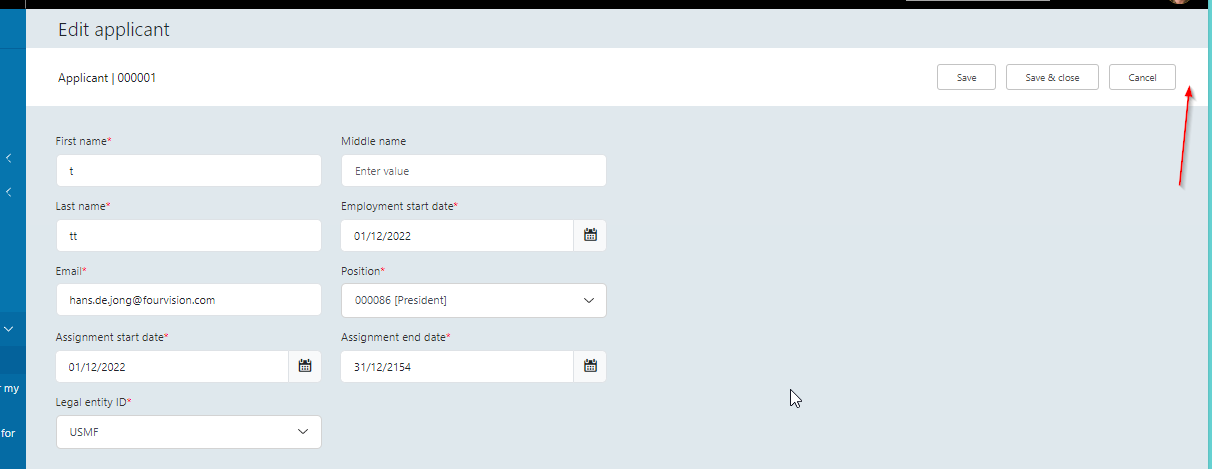
###All applicant documents for approval
This screen shows all documents that need to be approved and are related to applicants:
###HRM staff bulk creation of documents
HRM staff can mass create documents via All workers screen.

HRM staff can mass create documents for all workers, provided that it is based on a template and thus for all the same document category. Process is the same as for Line manager. See Line manager for the mass create process.
The difference is that HRM staff can select all departments, all roles, and all workers, and can select the report to:

###HRM: All workers
Typically HRM staff will have access to Manager app > All worker screen by granting this menu item to the role:
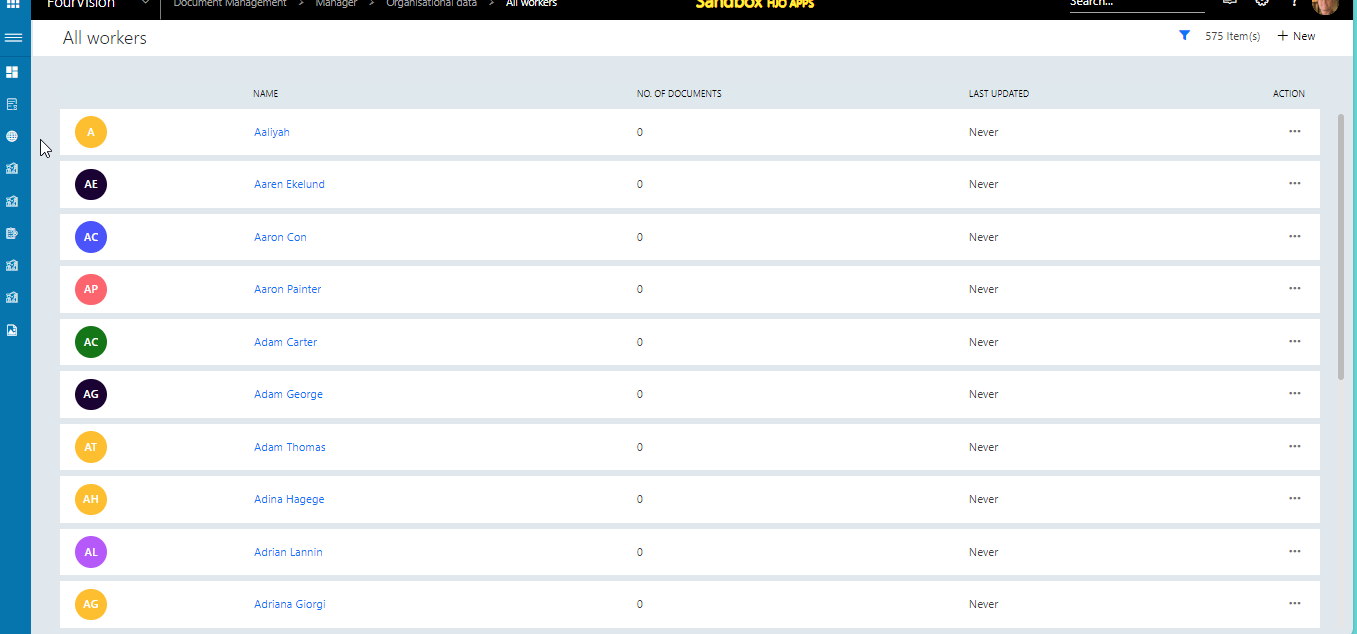
The user can perform all actions with documents, such as view, download upload new documents:

The user can also view worker details:

The user can view worker profile:
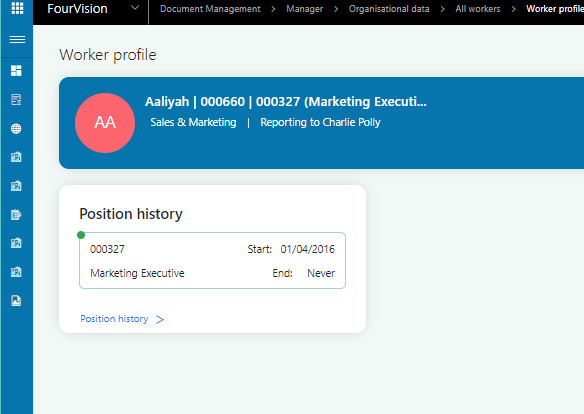
The access to the worker details and worker profile can be restricted, if needed. In that case you need to enable a parameter on ALL the roles that a user has:

Then a user cannot click on the name in the all worker list and cannot go to worker details nor profile:
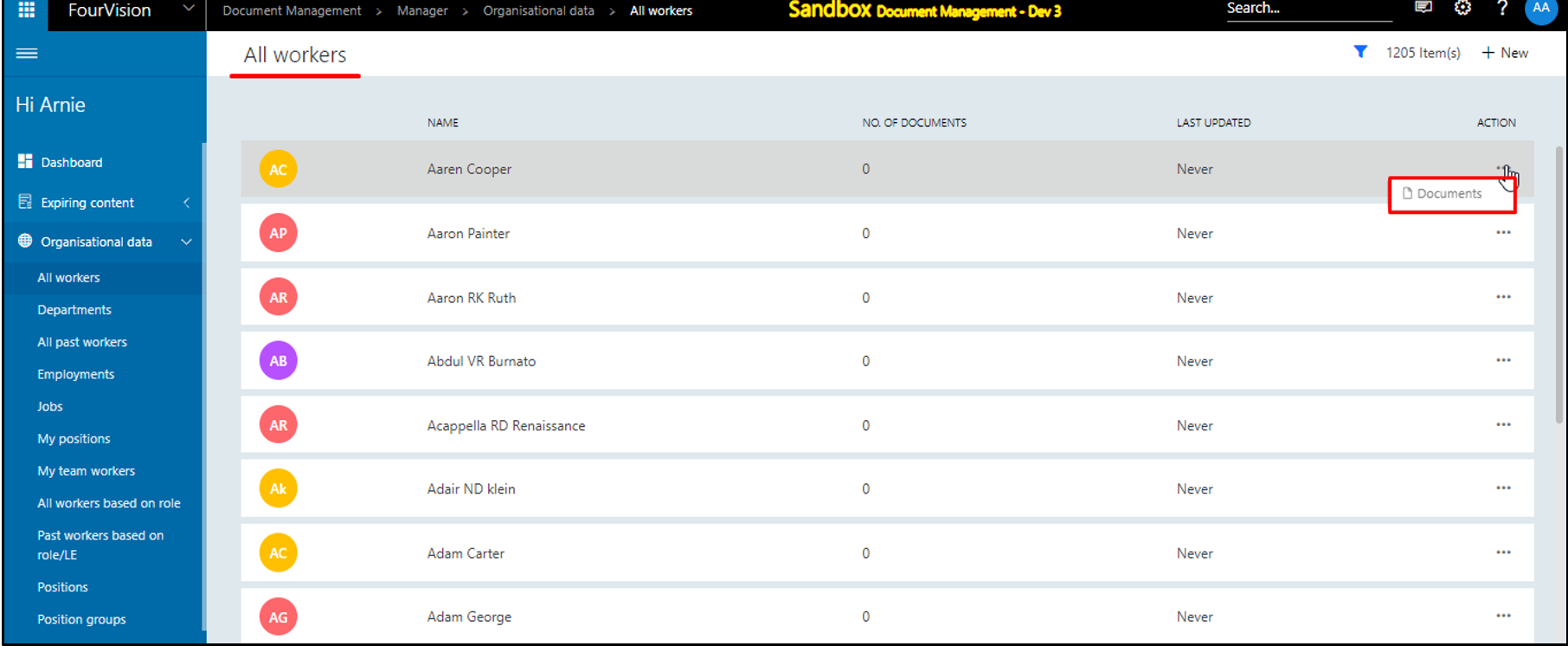
This only applies to the All worker screen!
###Hide Personal information and/or phone number
On the role, ‘Show personal information’ toggle is disabled by default.
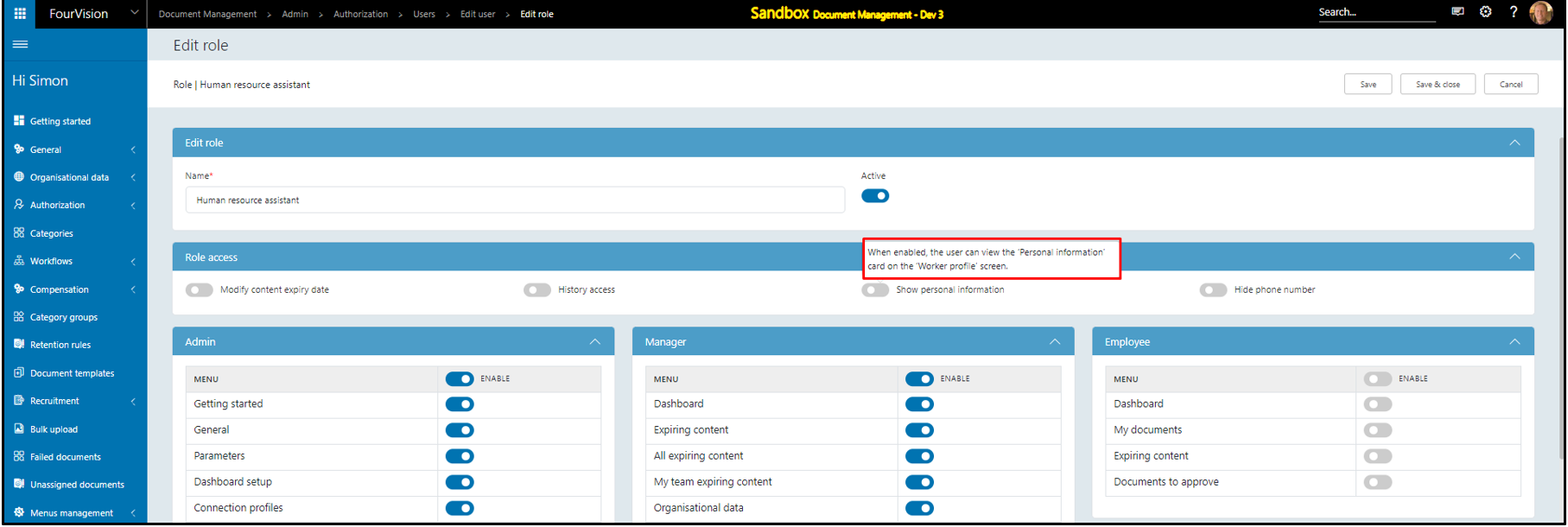
The ‘Personal Information’ card is therefore not showing on the 'Worker profile' screen (Employee app)

For the worker, the ‘Personal info’ section is also not showing on the 'Worker details'

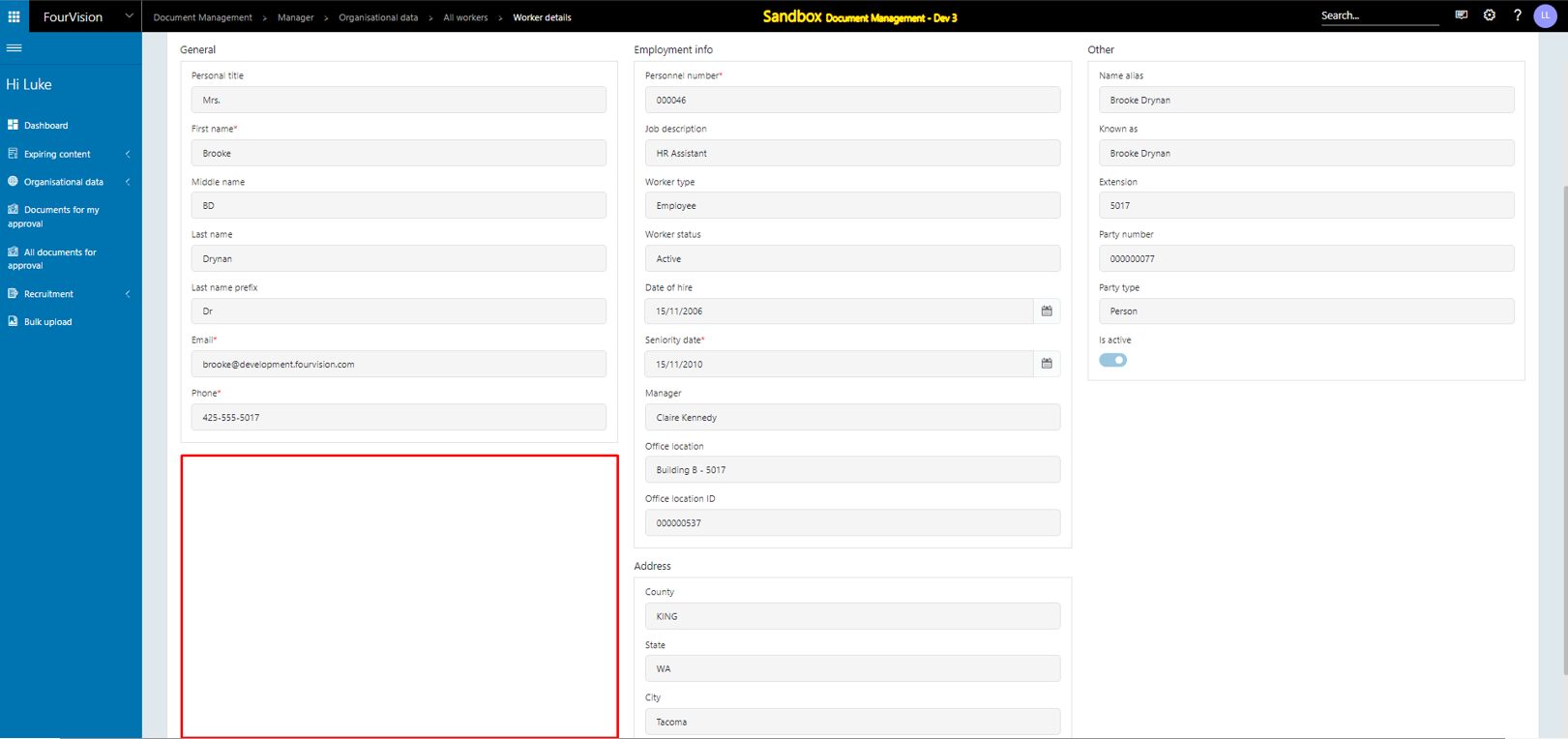
The ‘Personal Information’ card is not showing on the 'Worker profile' screen (Manager app)

Note: The ‘Show personal information’ toggle must be enabled to view the Personal information of the workers for the existing users.
On the role, The ‘Hide phone number’ toggle is disabled by default.

When you enable the toggle:
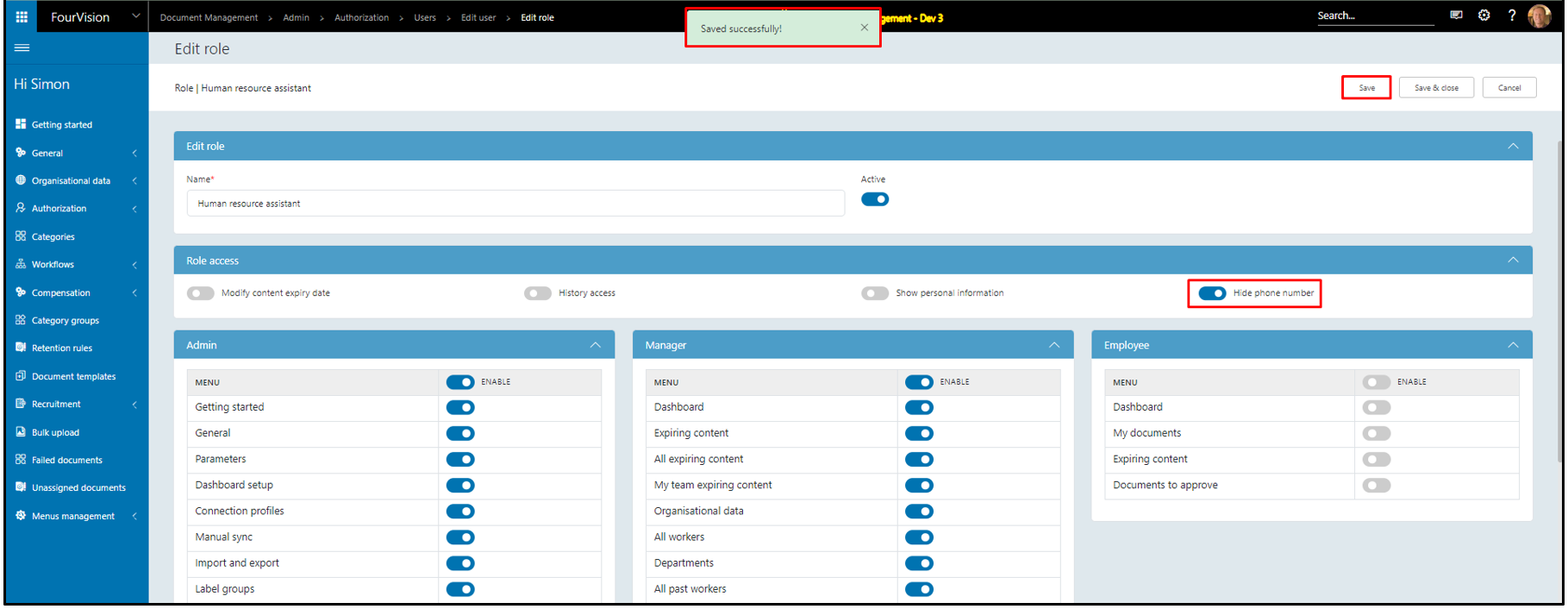
- The Phone number is not showing on the blue bar on the 'Worker profile' screen

- The Phone number is also not showing on the blue bar and the field ‘Phone’ not showing under the ‘Details’ tab on the 'Worker details' screen
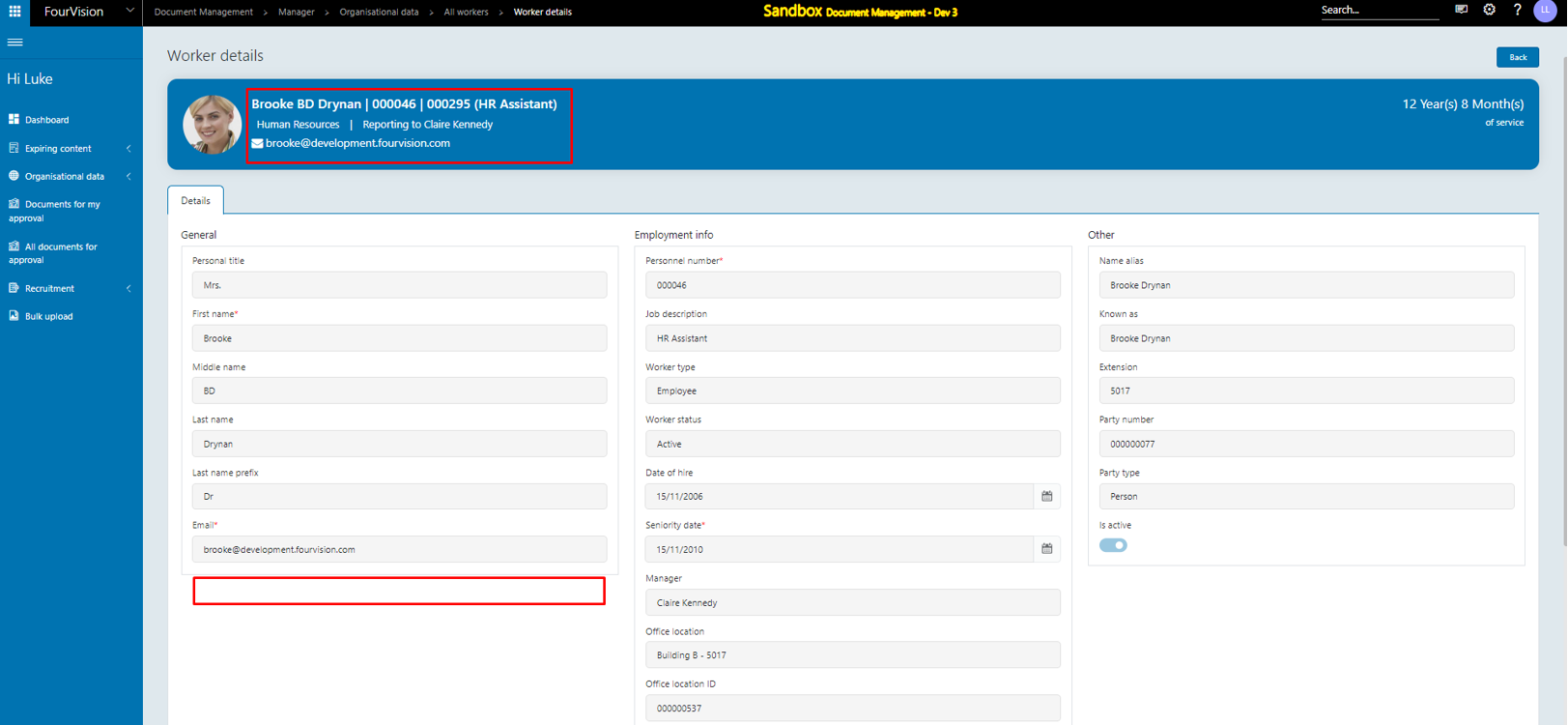
- And the ‘Phone’ column not showing on the 'Workers' screen
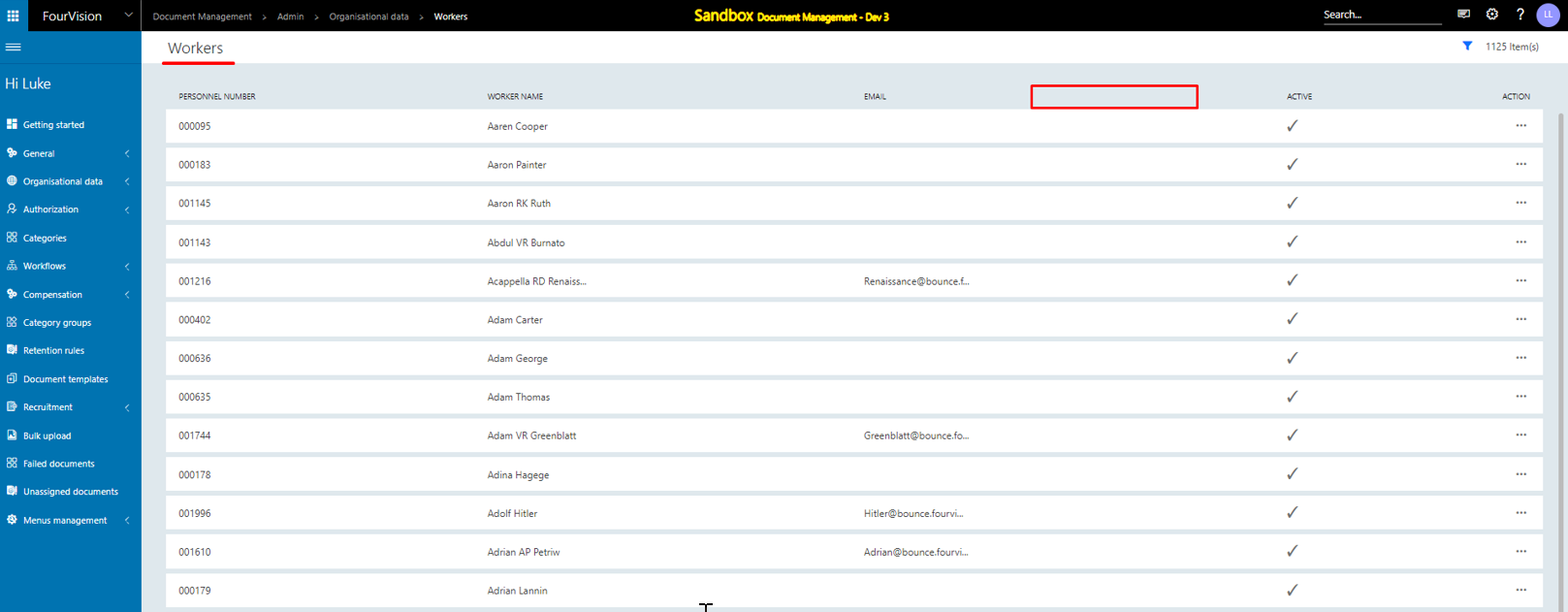
###All Documents
This screen shows all documents in the system, with options to search for documents based on search criteria on the fields document category, legal entity, worker and status.

Draft documents are excluded.
Documents will show with all details and versions:
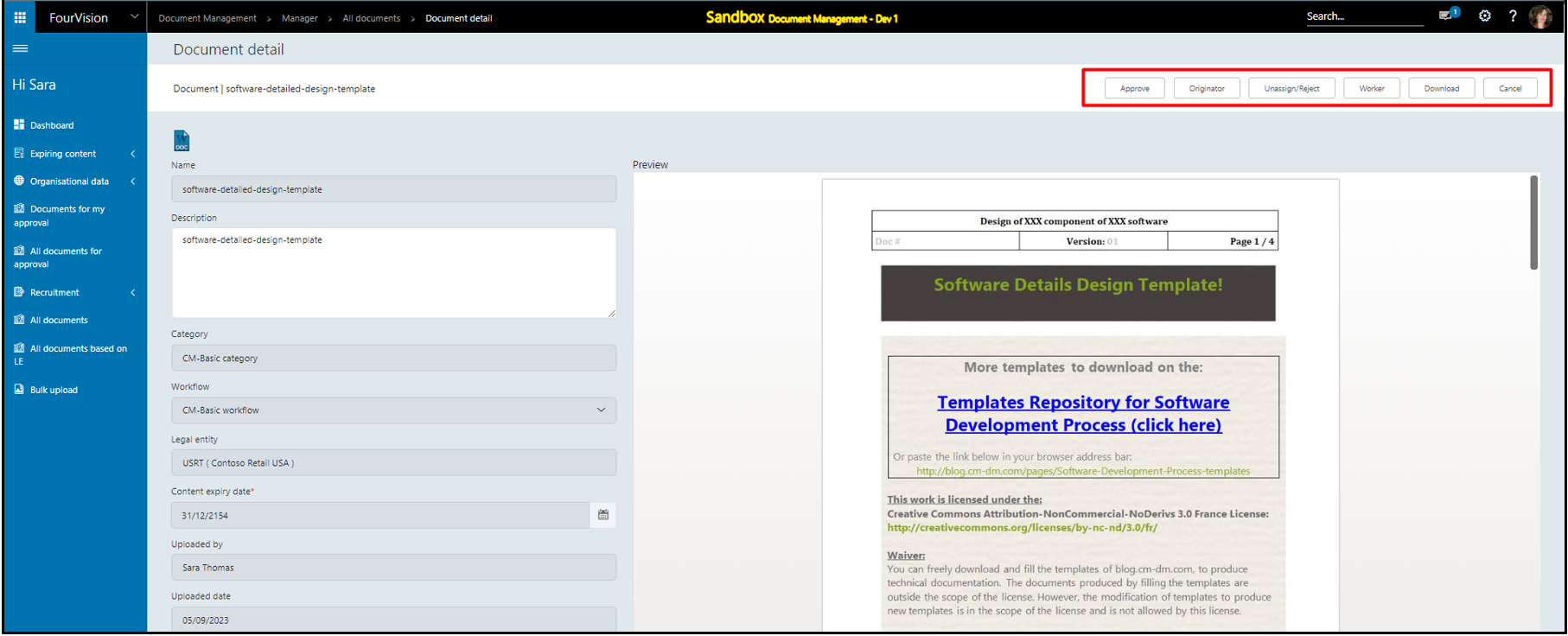
Ticking on 'Show all documents' will show all the documents along with the Archived ones

You have various filter options:

###all documents based on legal entity
This screen shows all documents in the system that you as a user have access to, based on the legal entities granted to you on you roles; with options to search for documents based on search criteria on the fields document category, legal entity, worker and status.

Draft documents are excluded.
Documents will show with all details and versions:
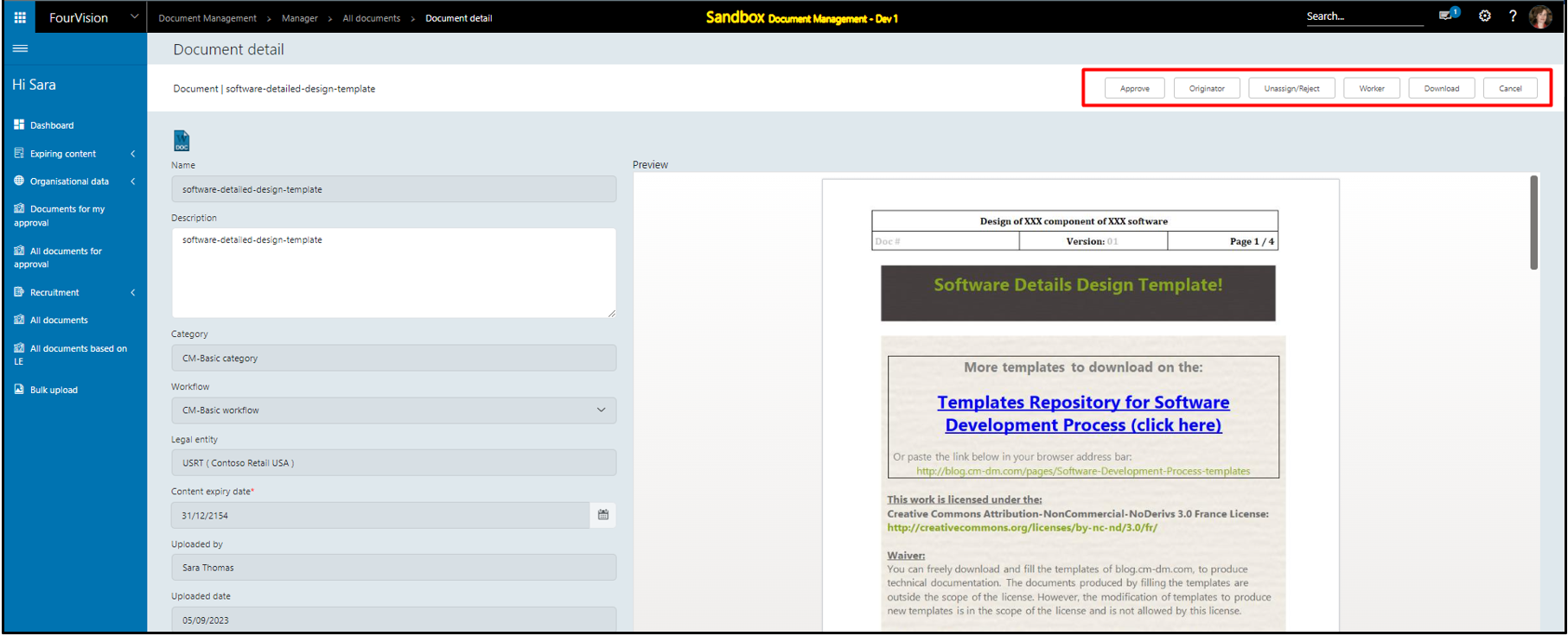
Ticking on 'Show all documents' will show all the documents along with the Archived ones

You have various filter options:

Documents for Past workers will not be visible on the ‘All documents based on LE’ screen as no active ‘Employment’ is assigned to the worker or document. But will show on the 'All documents' screen
###HRM: All workers based on role
In the manager app, via organizational data > "All workers based on role", the user can see the workers and their documents the user has access to based on the role of the user and the legal entities granted on the role in MS Dynamics 365 for Finance and Operations.
Here the user has various options to filter on the status of workers, to e.g. filter on exited (past) or pending (future employments) workers, and combine filters with worker type (employees versus contractors).
